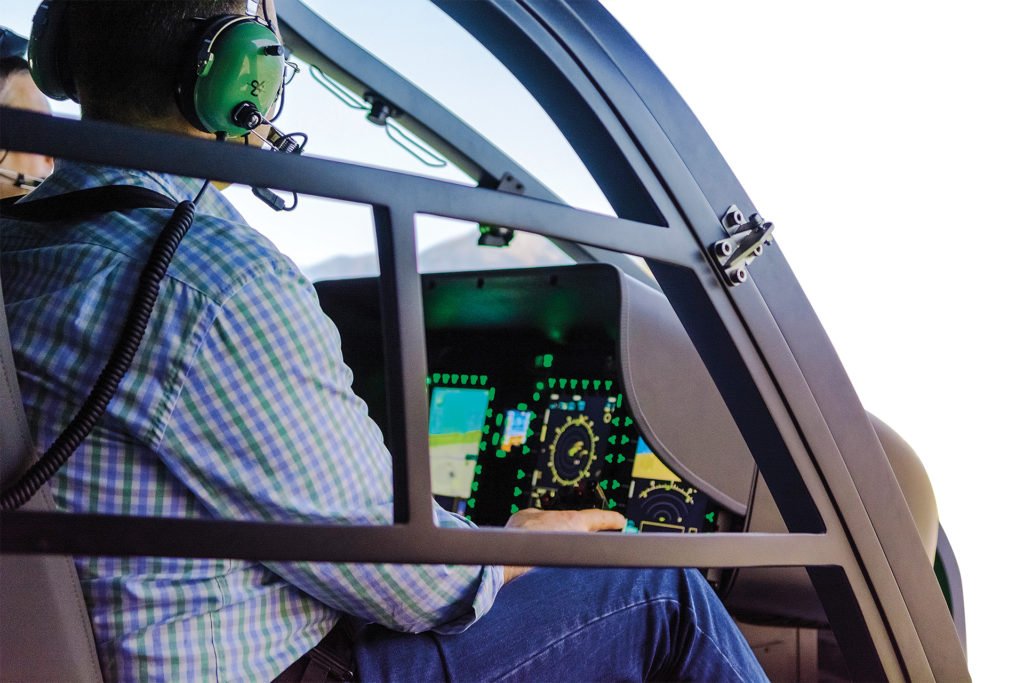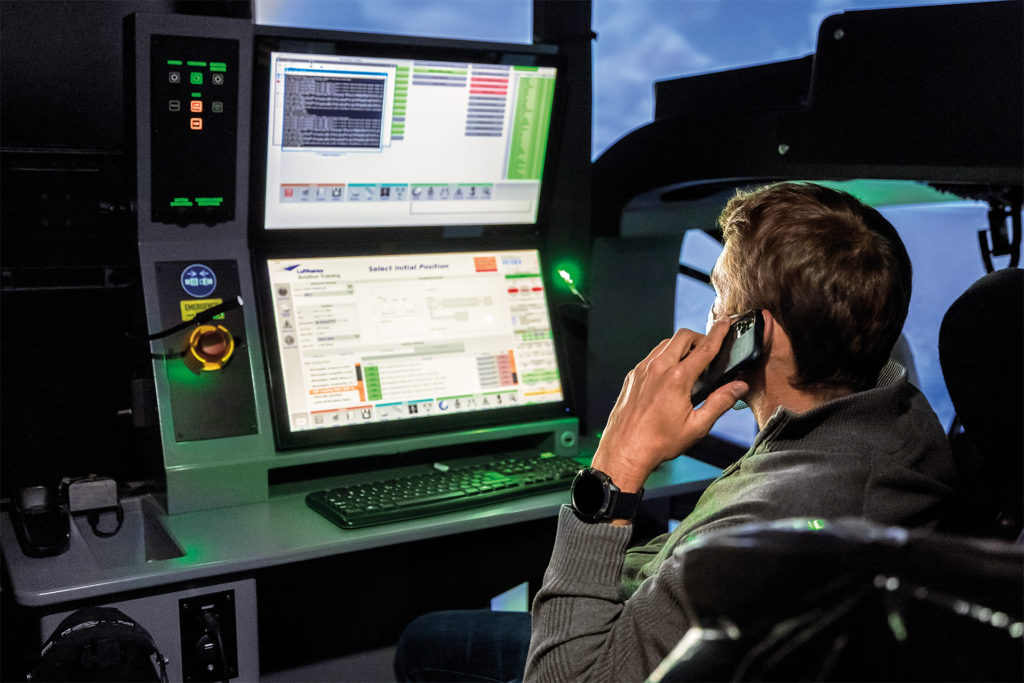For 33 years, Reiser Simulation and Training has been honing its passion for flight simulation and training, striving to become the best in the field while enhancing safety through innovation.
Located south of Munich, Germany, Reiser delivers a range of helicopter flight training solutions, including Level D full-flight simulators (FFS), flight and navigation procedures trainers (FNPTs), avionic desktop trainers (ADTs), maintenance training rigs and full-scale replica cockpits.

The company creates training devices for newer Airbus Helicopters machines with glass cockpits. In fact, Reiser replicated Airbus’s Helionix avionics suite, which is used on H135, H145, H160, and H175, and leverages it to train pilots.
This year at Heli-Expo, Reiser introduced an exciting new product to the helicopter industry. Its Avionic Cloud Trainer (ACT) is a derivative of its Level D simulator development process, explained Dr. Roman Sperl, CEO.
“It’s a side effect of the approach our company has taken in the past,” he said. “We were OEM [original equipment manufacturer] independent while building our FFS and we have always replicated avionics systems. We have engineered all of that functionality for an FFS. Now, we can put that software capability in the cloud.”
The ACT is a software-centered solution that allows helicopter crews to acquaint themselves with the capabilities of a cockpit long before they ever sit in the pilot’s seat. Further, they can complete their initial training at home using their own computer or tablet.
Since all Reiser training devices are interoperable and share the same avionics system software, mastering the ACT allows student pilots to proceed to the next level, Reiser’s Avionic Desktop Trainer (ADT), before graduating to more complicated devices. In this way, Reiser offers training aids to facilitate any stage of pilot development.

“Pilot training is getting complex,” said Martin Keil, Reiser’s chief technology officer. “We now have glass cockpits with multi-layered menu systems, and pilots need to understand which button to push on the interface. With the ACT, crews can acquaint themselves with the capabilities of a cockpit before moving on to higher fidelity members of our training device family.”
While the ACT was a natural spinoff of Reiser’s FFS and desktop trainer, it offers additional benefits during a global pandemic.
“We have learned through COVID that we need to adapt to new challenges, including training at home,” Sperl said. “You can use the ACT safely at home to familiarize yourself with complex avionics systems. Pilots used to travel across borders to train. Now, operators are looking to bring simpler training systems into their home base. This way, we free up cost-intensive training devices like full-flight simulators and reduce overall training costs.”

Integrated in the operator’s qualified training system, the ACT can cover up to 80 percent of the training tasks related to systems operation. Reiser’s ACT is available to its customers with no associated ownership costs or specific hardware requirements.
“All you need to do is subscribe to the cloud service and off you go,” Keil said.
The company plans to enable free temporary downloads for Heli-Expo attendees. Although the cloud-based trainer is new, Sperl reported that Reiser is seeing great interest from EMS and law enforcement operations.
“There are several advantages for civil or military operators,” he said. “Our training devices feature a scenario generator, and you can put together any scene on the ground. It’s highly adaptable, almost limitless, with an intensive debrief capability.”
Something for smaller operators
When it began building Level D FFS devices, Reiser entered the top end of the flight simulation training device market. However, last year, the company acknowledged that smaller helicopter operations, including flight schools, don’t necessarily need an FFS.

“We see great potential for the targeted fidelity training devices,” Sperl said.
In late September 2021, Reiser announced a partnership with fellow German company RS Flight Systems to develop a line of innovative yet cost-effective helicopter FNPTs and flight training devices (FTDs).
The result is F-light Line — or “flight simulator light.” It combines Reiser’s capable Level D flight model and replica Helionix avionics software with a more affordable hardware package tailored to operators with smaller budgets.
Sperl said RS Flight Systems will provide installation and hardware services for the F-light Line devices.
“It’s a partnership to gain access to a market that our product line of Level D would not have reached,” he explained. “The benefit for customers is they will be flying the existing Level D Helionix software on a lower-end, off-the-shelf device, while still benefitting from the full capability of training.”
“If training becomes more available and affordable, operators will spend more hours on training than before — not just the minimum,” Keil added.
Reiser’s helicopter training products, which also include augmented reality and extended reality instructional devices, are certifiable to both the European Union Aviation Safety Agency (EASA) and U.S. Federal Aviation Administration (FAA) standards.
In addition, its FFS devices incorporate the company’s innovative “mothership” configuration with Roll-on Roll-off (Ro-Ro) capability, whereby different cockpits from different OEMs can be interchangeably installed in the same simulator shell, or mothership.

In tune with its interoperable suite of products, Sperl said Reiser will look to the future by leveraging big data to enhance its networking and connectivity capabilities.
“We intend to provide pilot training program improvements by monitoring individual pilot performance and comparing it to a standard reference, using a simple, integrated interface,” Sperl said. “We have all of this big data available and are looking to harness it.”
“We’ve built synthetic training devices which fully replicate the original helicopter,” Keil added. “When you have that data, you can do anything with it according to customer need.”









